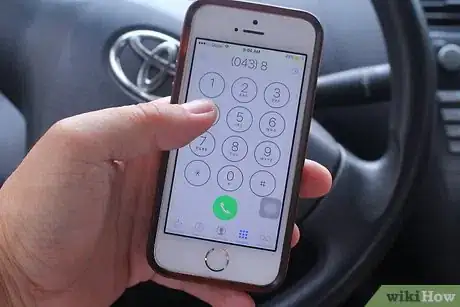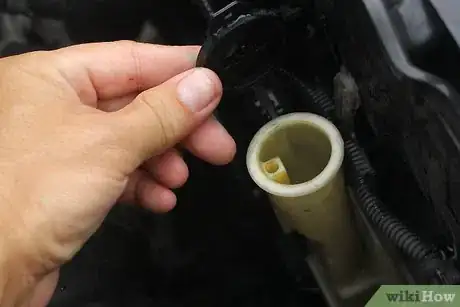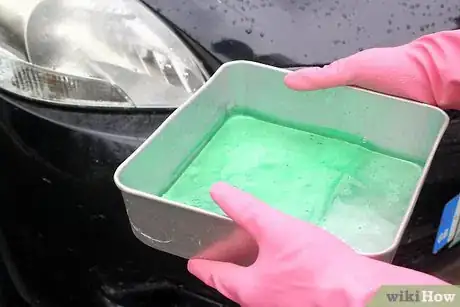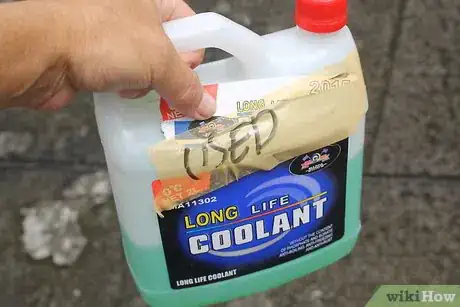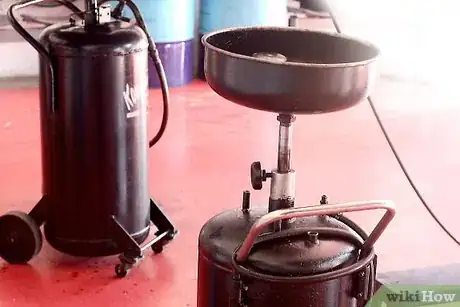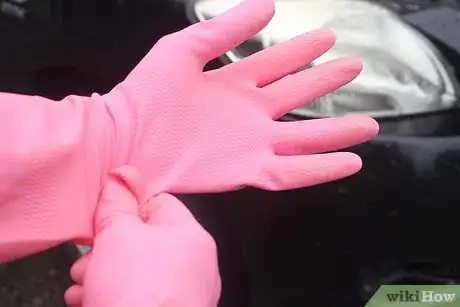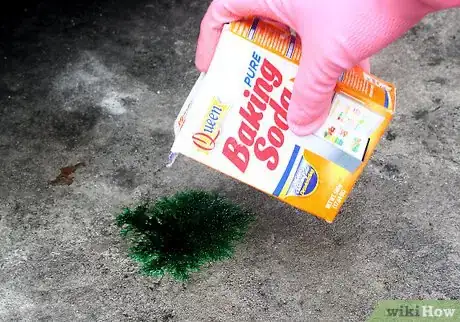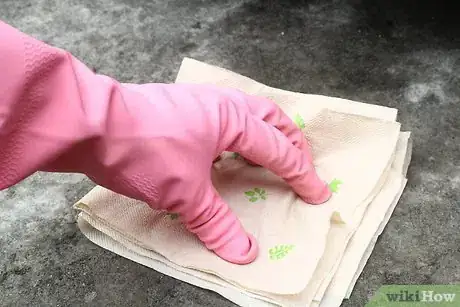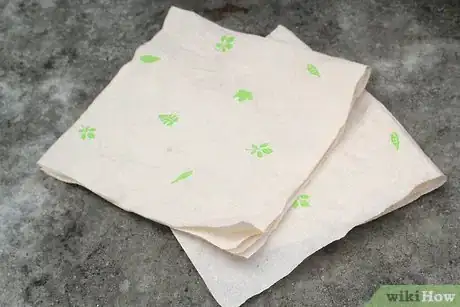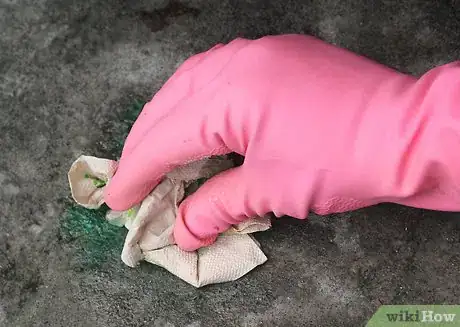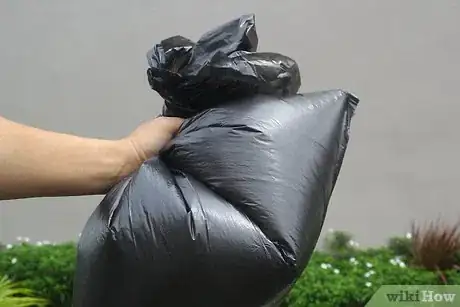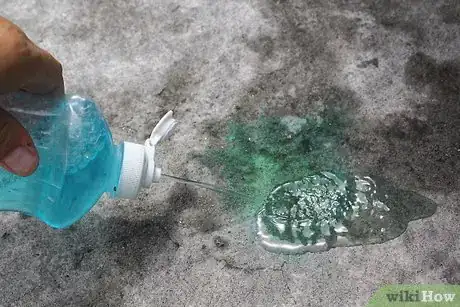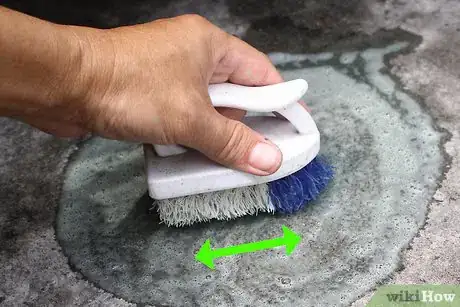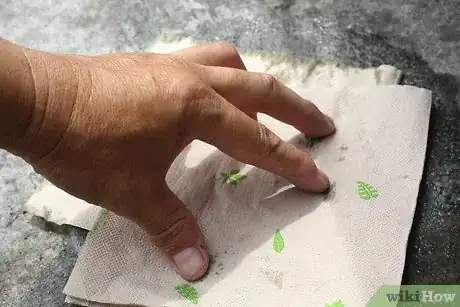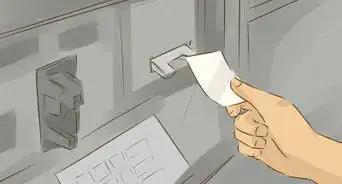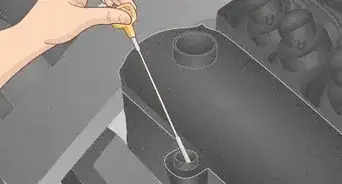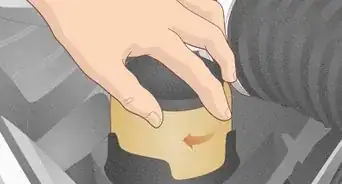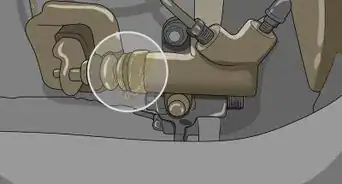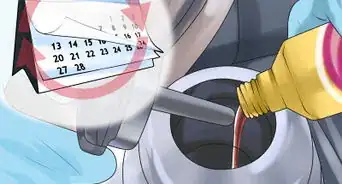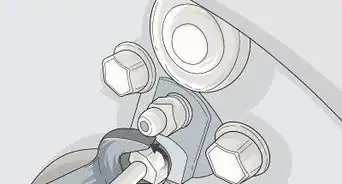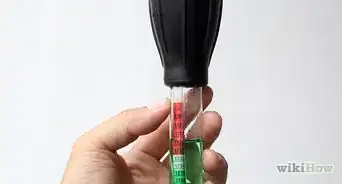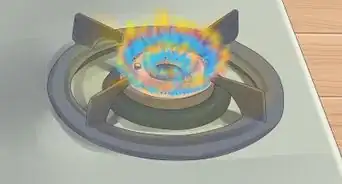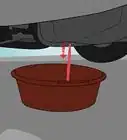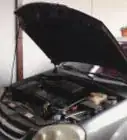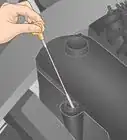This article was co-authored by wikiHow Staff. Our trained team of editors and researchers validate articles for accuracy and comprehensiveness. wikiHow's Content Management Team carefully monitors the work from our editorial staff to ensure that each article is backed by trusted research and meets our high quality standards.
There are 7 references cited in this article, which can be found at the bottom of the page.
This article has been viewed 76,756 times.
Learn more...
Antifreeze, a necessary chemical for vehicles, is very dangerous. Check with your government to find out how to dispose of antifreeze waste. Take used antifreeze to a recycling center that accepts it. Antifreeze tainted with oil or gas must be shipped with documentation to a hazardous waste facility. Clean up any spills right away by covering them with an absorbent material like kitty litter.
Steps
Disposing of Antifreeze Waste
-
1Contact recycling centers for antifreeze disposal locations. Check with your local government or visit a community recycling day. They may accept pure antifreeze or direct you where to go. Other good places to check are machine shops and oil change shops. Many of them accept antifreeze for recycling. Wastewater management places may also accept small amounts of antifreeze.[1]
- Search for facilities by searching your city’s website, searching online for mechanics in your area, or calling disposal companies in the area.
- There may be a small facility usage fee when recycling antifreeze. These fees will be greater at hazardous waste disposal facilities.
-
2Identify antifreeze that looks dirty or smells like gas. Even a drop of oil or gas in antifreeze taints it. This tainted antifreeze is considered hazardous and must be shipped to a different facility than normal used antifreeze. Look at it for signs of muddiness. Normal antifreeze is brightly-colored and smells sweet.[2]
- Damage to a vehicle can cause fluids to mix. If you aren’t sure, consider the antifreeze polluted.
Advertisement -
3Place tainted and pure waste antifreeze into separate containers. Store the antifreeze in containers such as old antifreeze bottles. Make sure these containers are well-sealed. Both types of antifreeze must be shipped to different places, so label them to remember which one is which.
- When flushing antifreeze out of a vehicle, use a different drain pan and funnel than you use for oil and other fluids.[3]
-
4Find hazardous waste disposal centers for tainted antifreeze. This antifreeze can’t be recycled. Since it is considered hazardous, only a hazardous waste disposal facility will accept it. Ask your local government. Mechanics at repair shops may also be able to tell you where they dispose of their antifreeze.
-
5Drive the antifreeze to a recycling facility. You can’t ship antifreeze in the mail. You have to bring the container to the facility. A commercial hauler or waste oil service may also do it for you. Once you reach the facility, get a receipt that shows where you delivered the antifreeze.[4]
- Hiring a commercial hauler for hazardous antifreeze makes the process easier. This is only necessary for shipping large amounts of antifreeze. If you transport it yourself, you will need to provide your own documentation about using the truck.
- Always consult your government for disposal regulations.
Removing Antifreeze Spills
-
1Wear protective gloves or masks. When you see an antifreeze spill, ventilate the area as much as you can. Wear a mask to prevent breathing in the sweet odor. Long sleeves and protective gloves can also help avoid skin exposure.
-
2Place absorbent material over the spill. An absorbent material, such as kitty litter, sand, or baking soda, can pick up antifreeze. Treat the spill immediately by layering material over it.[5]
-
3Cover the absorbent material with paper towels. Paper towels will aid in absorption and protect the material from scattering. Extra layers can be added to ensure no antifreeze escapes.[6]
-
4Let the material rest for a few hours. At the very least, wait one hour as the antifreeze is absorbed. Don’t wait too long, though. Come back within three hours to make sure the antifreeze hasn’t set in as a stain.
-
5Wipe up the absorbent material with paper towels. Pick up the absorbent material and leftover antifreeze with some dry paper towels. Wash your hands with soap and water when finished so you don’t accidentally ingest any fluid.
-
6Throw the absorbent material in the trash. The antifreeze-soaked litter and paper towels can go through regular garbage disposal. Seal the bag and keep it away from children and animals. Antifreeze is dangerous to consume, so anyone who touches the material should wash their hands immediately.
-
7Cover the area with soap. An average laundry or dish detergent will also help clean your floor. For stains that have begun to set in, try powdered detergent. Pour some soap out over the stain. Let the soap settle for a minute.[7]
-
8Scrub the area and rinse with clean water. Spray some water onto the spill to moisten it. Use a nylon brush to scrub in the soap. Finish by flushing the area with water.[8]
-
9Dry the wet spot in open air. Keep the spot exposed to air so it can dry. Open any nearby doors or windows. This may take a few hours but helps in removing the smell. When this isn’t possible, layer some newspaper over the wet area for at least an hour or sop up the mess with paper towels.
Community Q&A
-
QuestionCan old antifreeze be cleaned up and reused?
 Community AnswerNo. Dispose of it. The stuff does not last forever, and no amount of filtering or cleaning is going to make it as good as newly bought antifreeze. Dispose of old antifreeze as described in the article, please.
Community AnswerNo. Dispose of it. The stuff does not last forever, and no amount of filtering or cleaning is going to make it as good as newly bought antifreeze. Dispose of old antifreeze as described in the article, please. -
QuestionWhat if the antifreeze is old?
 Uglymug18Community AnswerThe age of the antifreeze doesn't matter, it will all be dumped into the same recycling bin and mixed together. The bin is then sent to a recycling center to be put through the recycling process.
Uglymug18Community AnswerThe age of the antifreeze doesn't matter, it will all be dumped into the same recycling bin and mixed together. The bin is then sent to a recycling center to be put through the recycling process.
Warnings
- Antifreeze is highly toxic. Children and animals may be tempted to drink it. Always dispose of it legally and safely.⧼thumbs_response⧽
- Never pour antifreeze down a drain, into a septic system, or on the ground.⧼thumbs_response⧽
References
- ↑ http://www.mass.gov/eea/agencies/massdep/recycle/hazardous/antifreeze.html
- ↑ https://www.pca.state.mn.us/sites/default/files/w-hw4-02.pdf
- ↑ http://www.popularmechanics.com/cars/how-to/a329/2063646/
- ↑ http://www.michigan.gov/documents/deq/deq-ead-tas-antifrez_320830_7.pdf
- ↑ http://www.mass.gov/eea/agencies/massdep/recycle/hazardous/antifreeze.html
- ↑ https://www.angieslist.com/articles/tips-driveway-stain-removal.htm
- ↑ http://www.acmehowto.com/cleaning/concrete-antifreeze.php
- ↑ http://www.stain-removal-101.com/cleaning-garage-floors.html
About This Article
The right way to dispose of antifreeze depends on whether it's pure or tainted. Tainted antifreeze looks dirty, smells like gas, and has either oil or gas in it, whereas pure antifreeze is a bright green or blue. If your antifreeze is tainted, put it in a safe container and take it to a hazardous waste disposal center. For pure antifreeze, bring it to a recycling facility to be recycled. For more information about disposing of antifreeze, like how to clean up a spill, read on!
